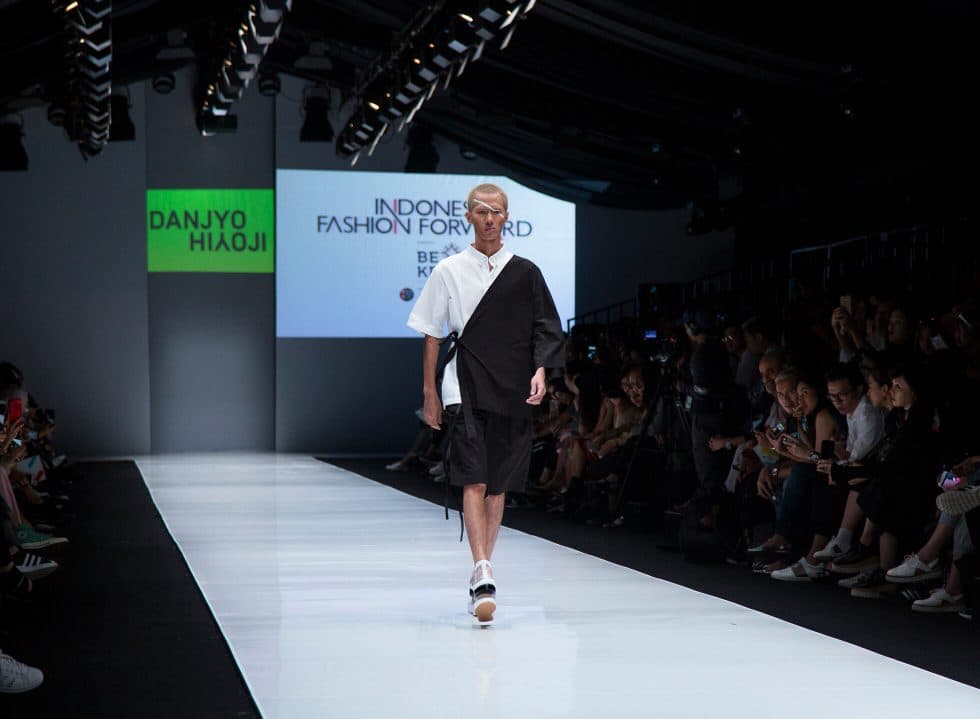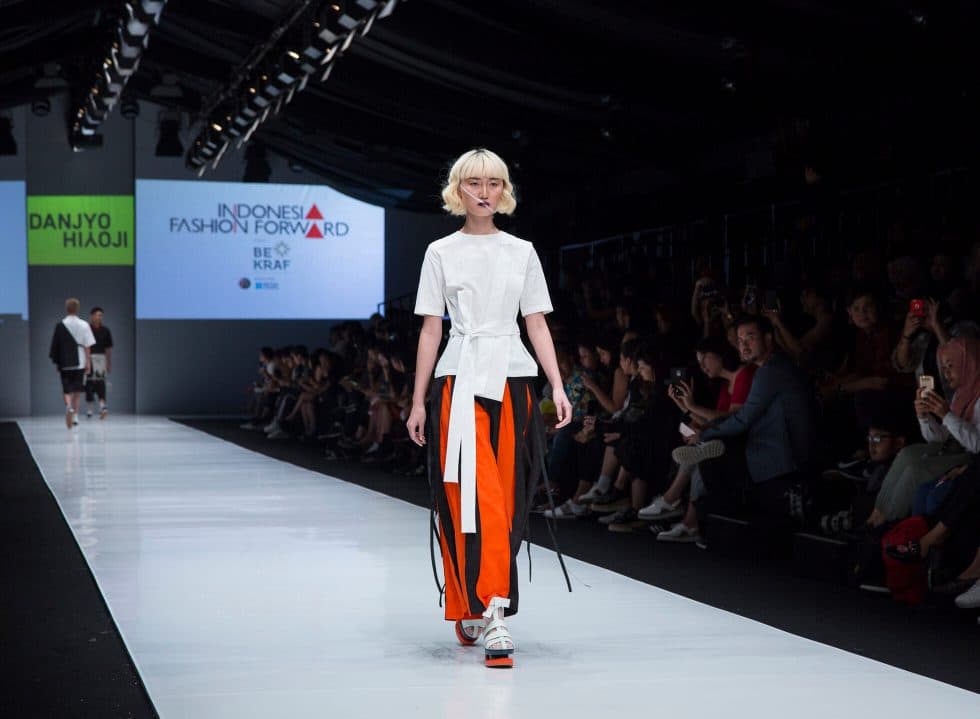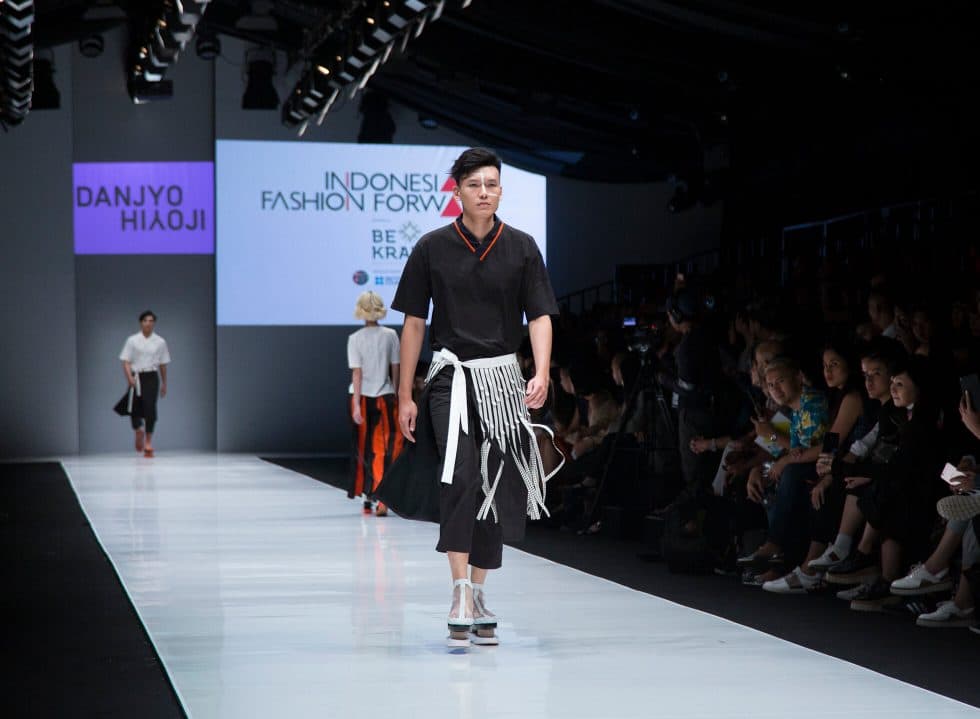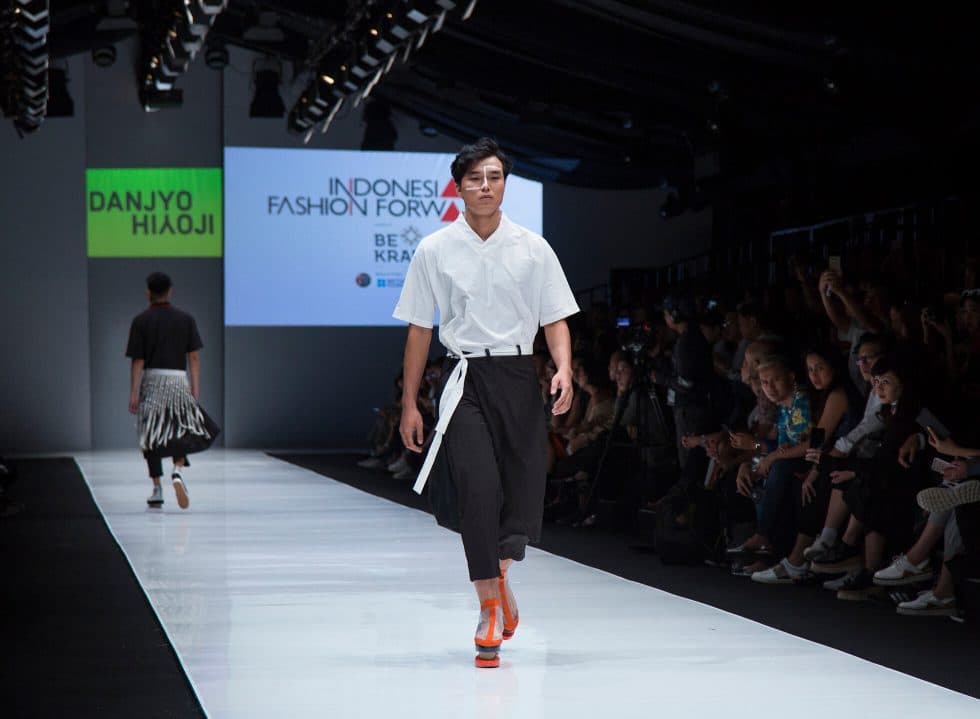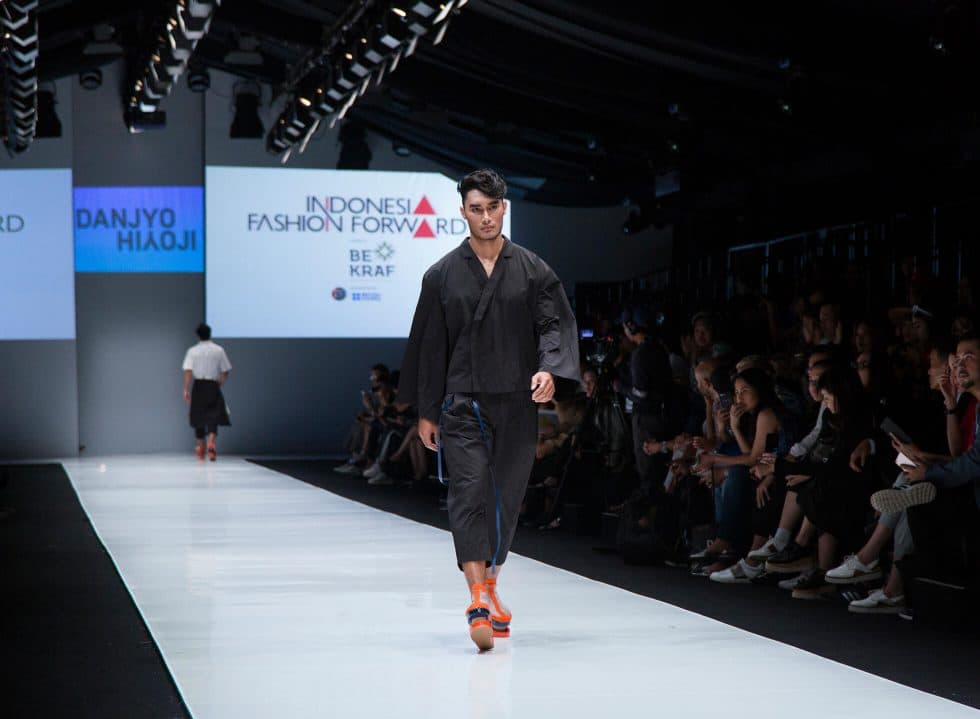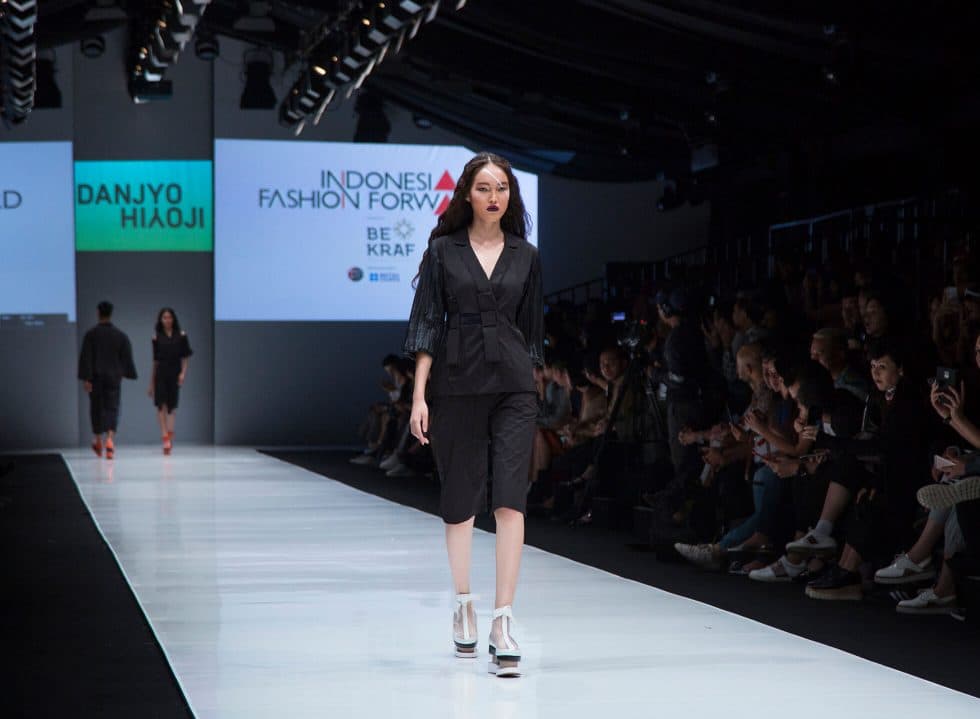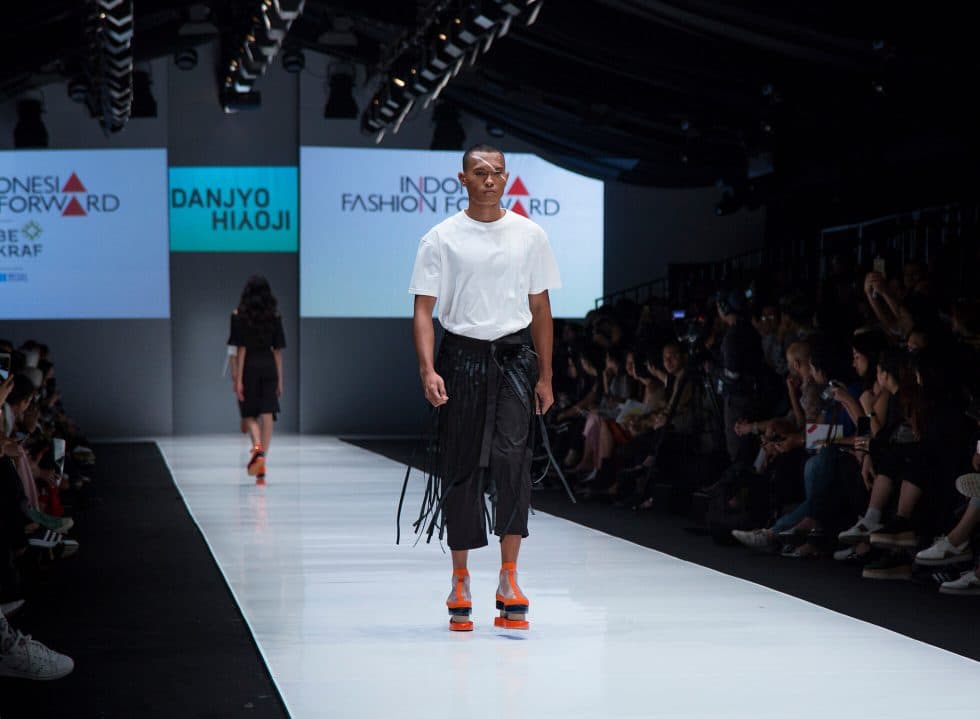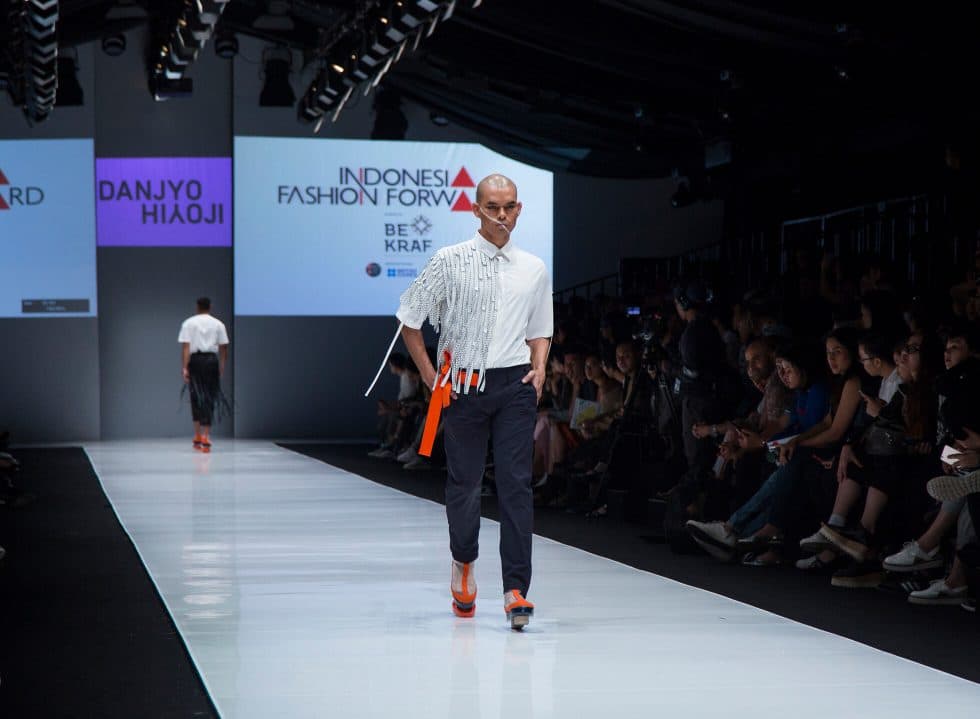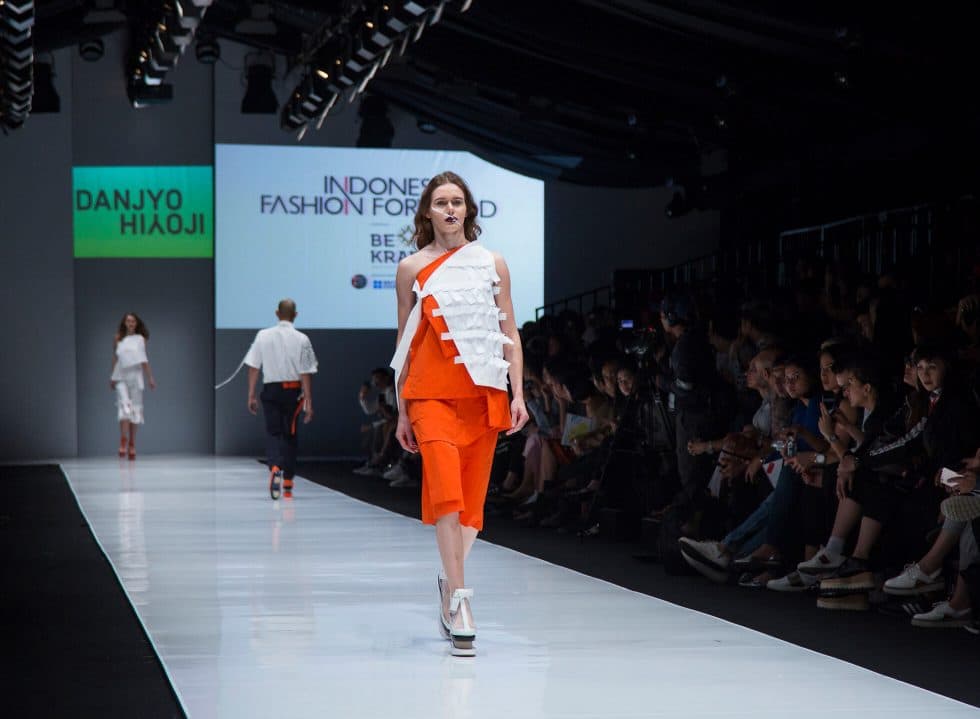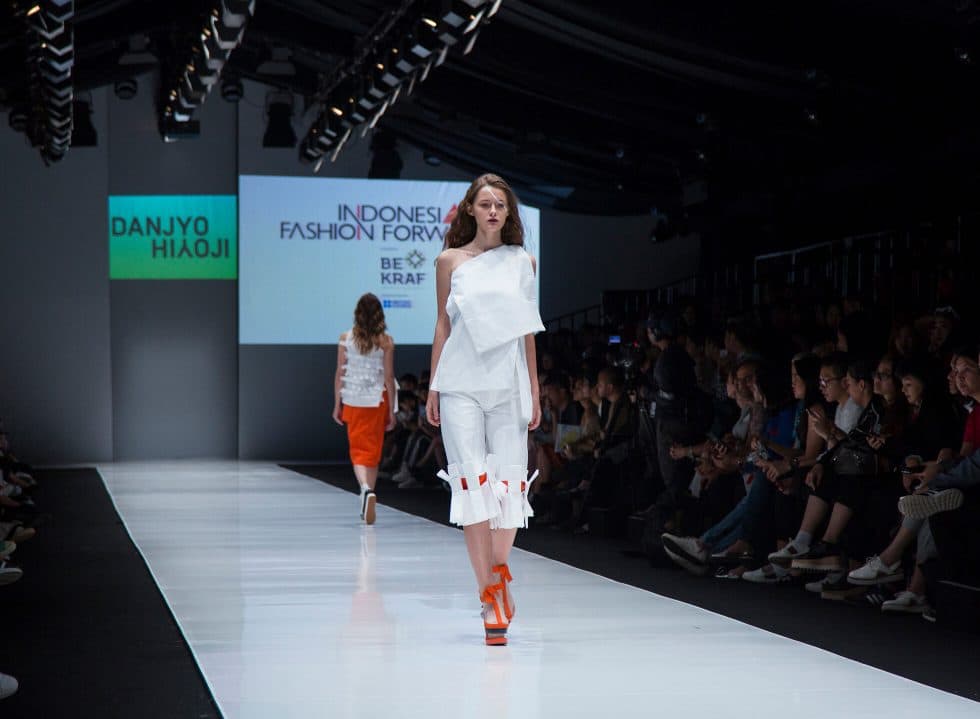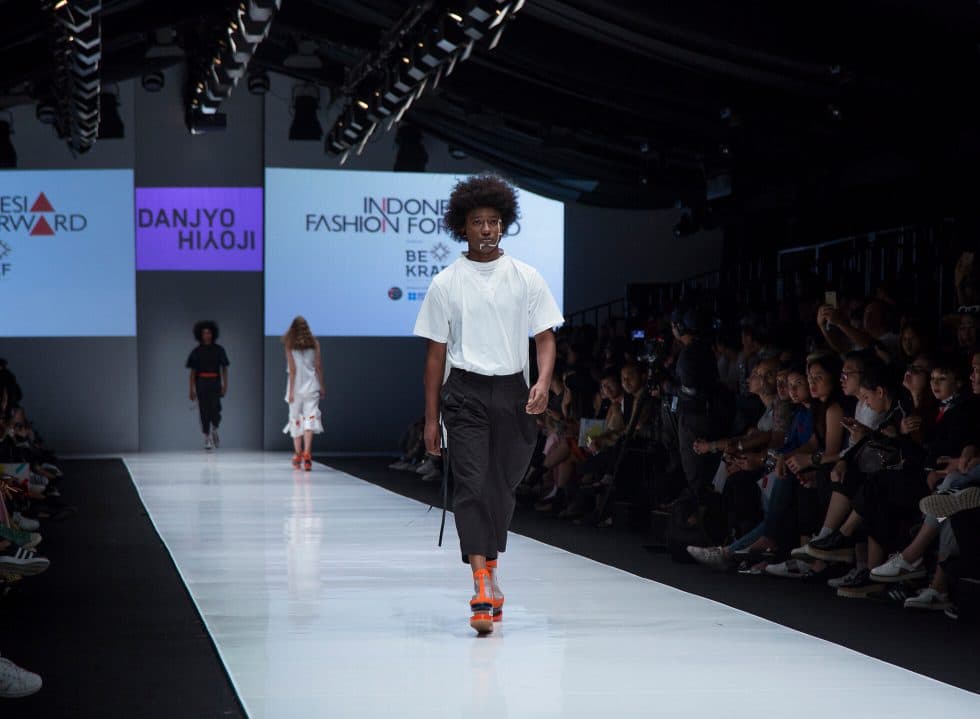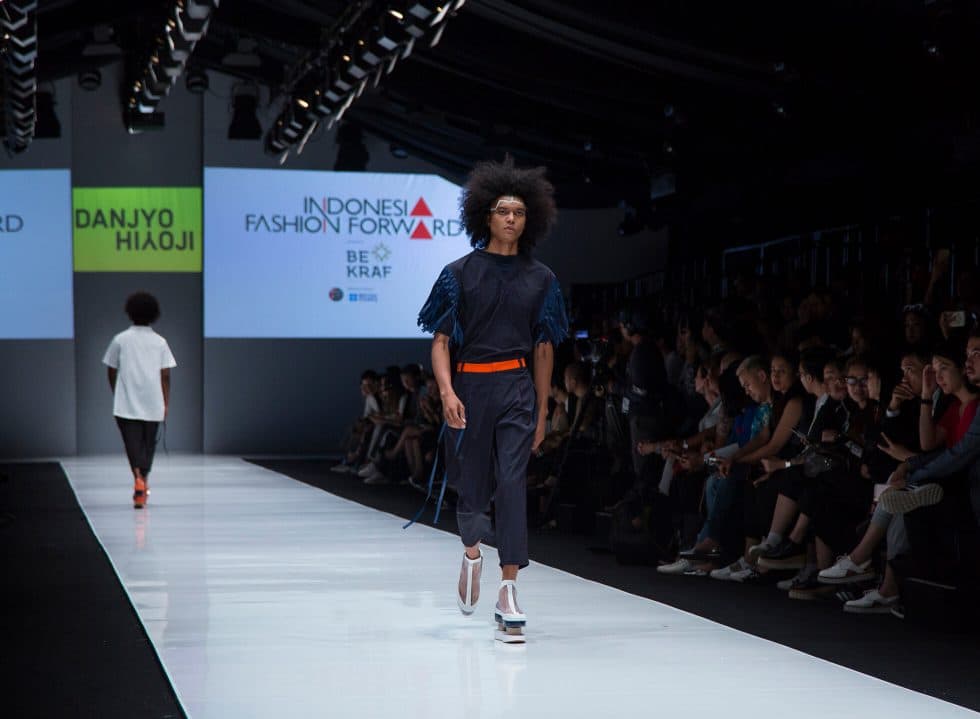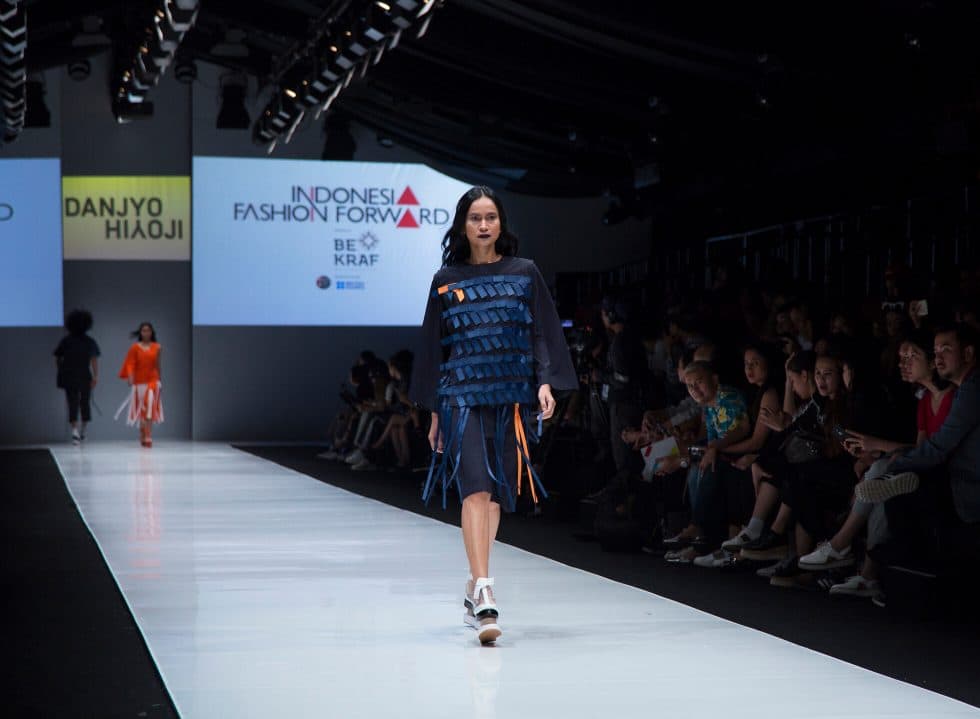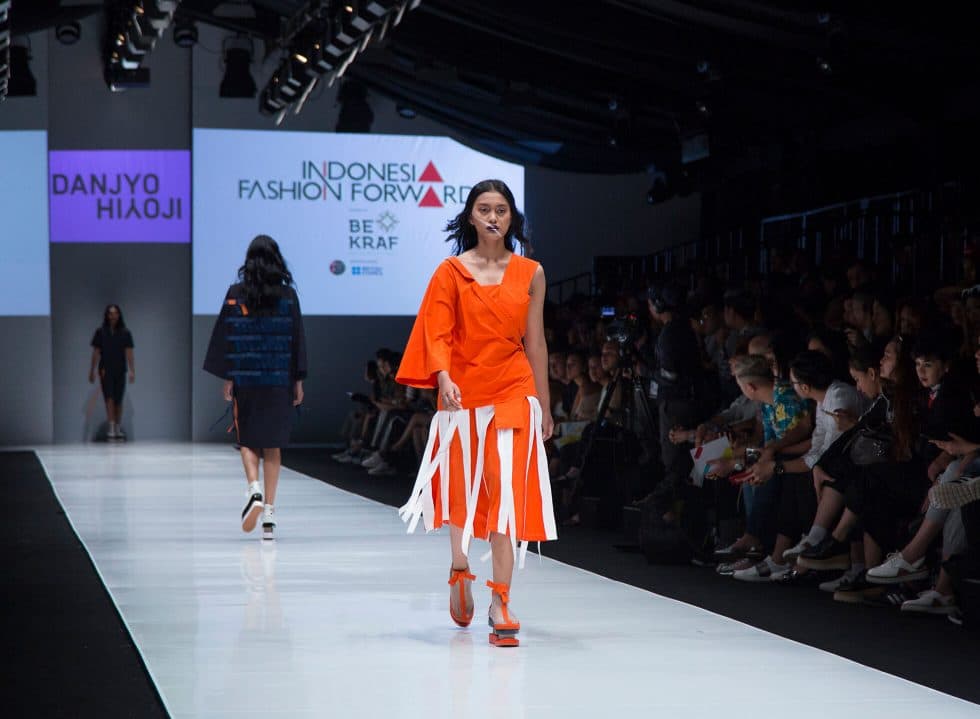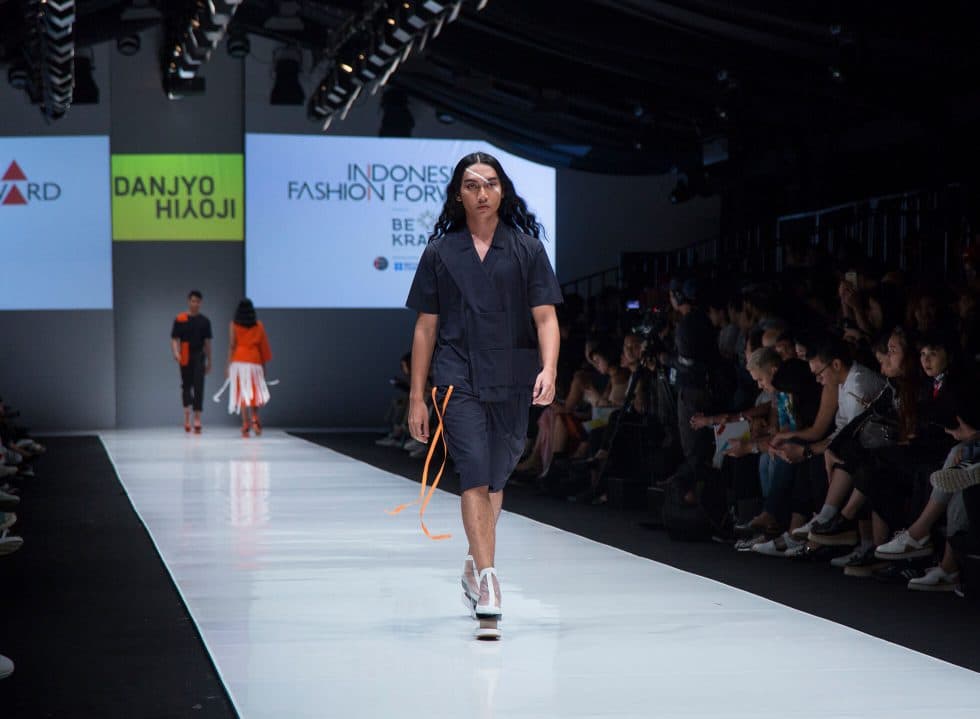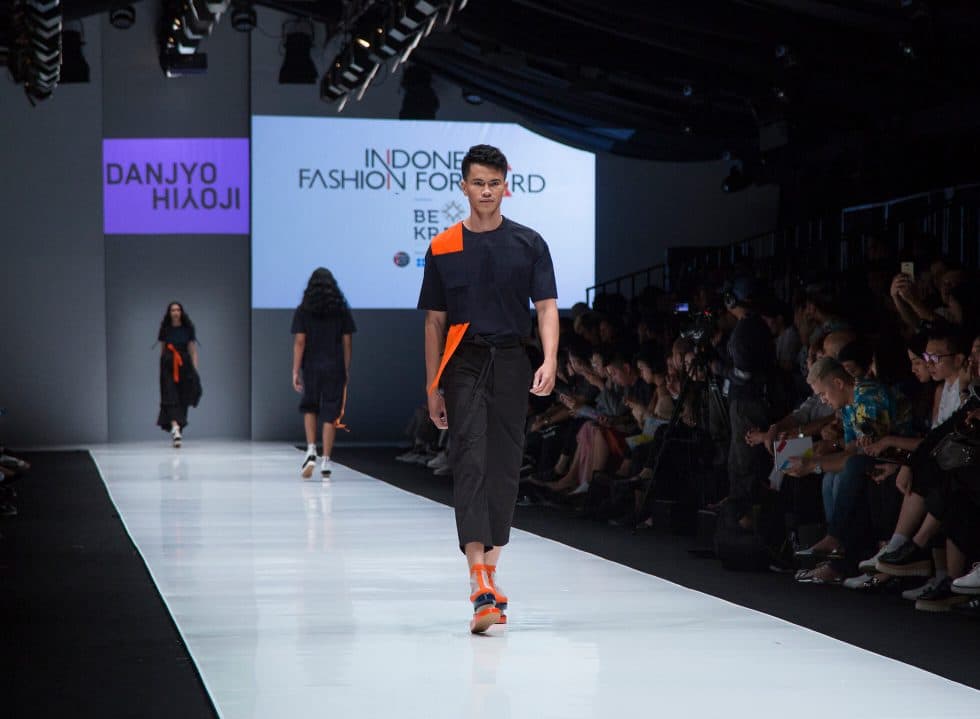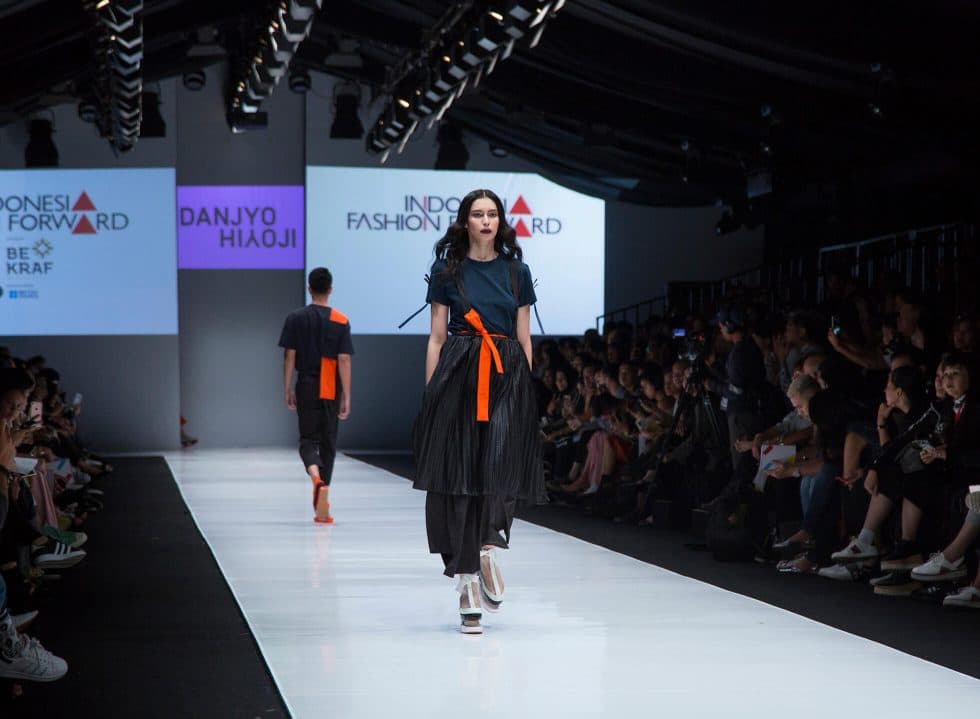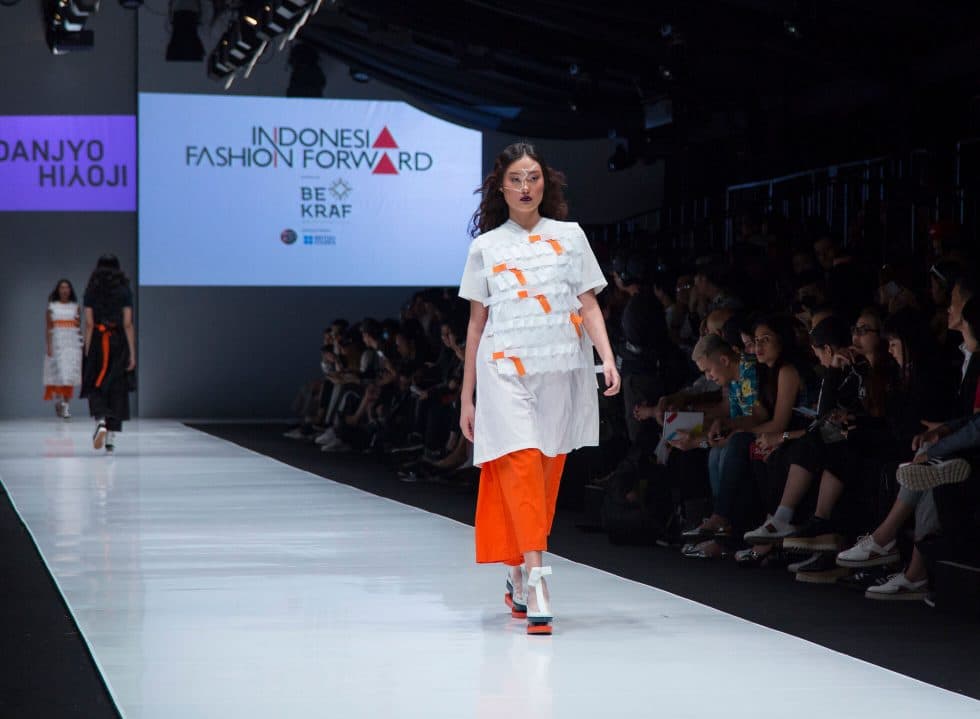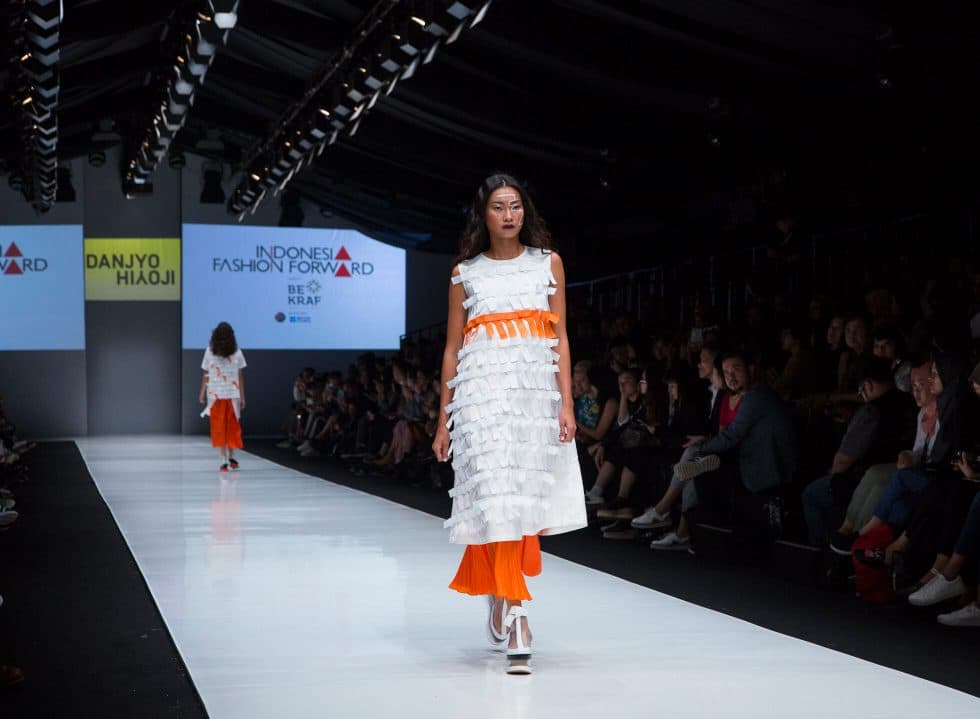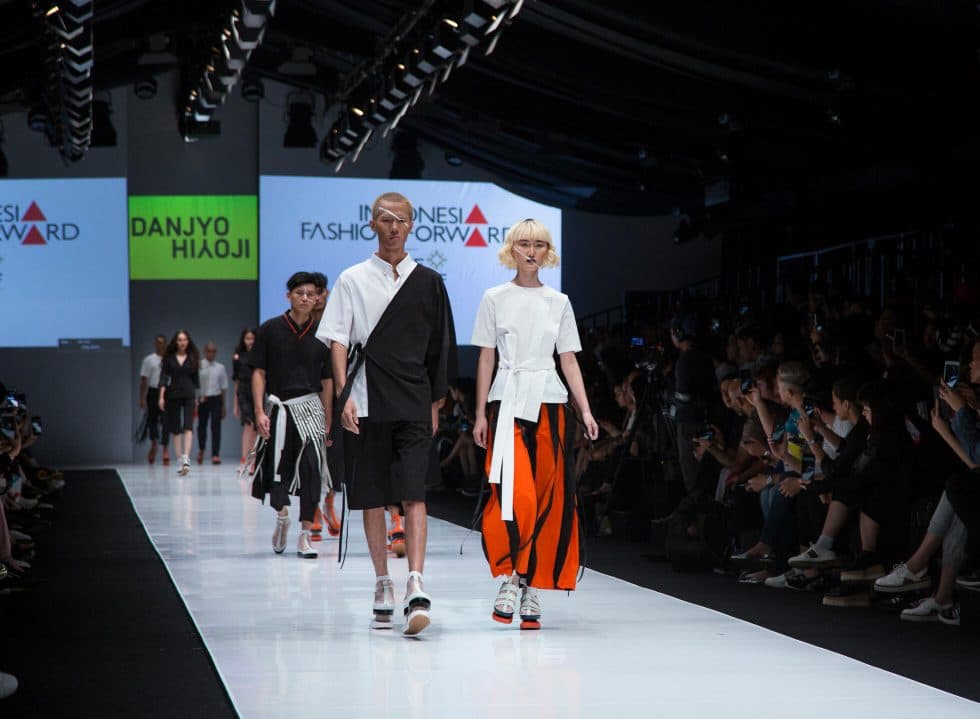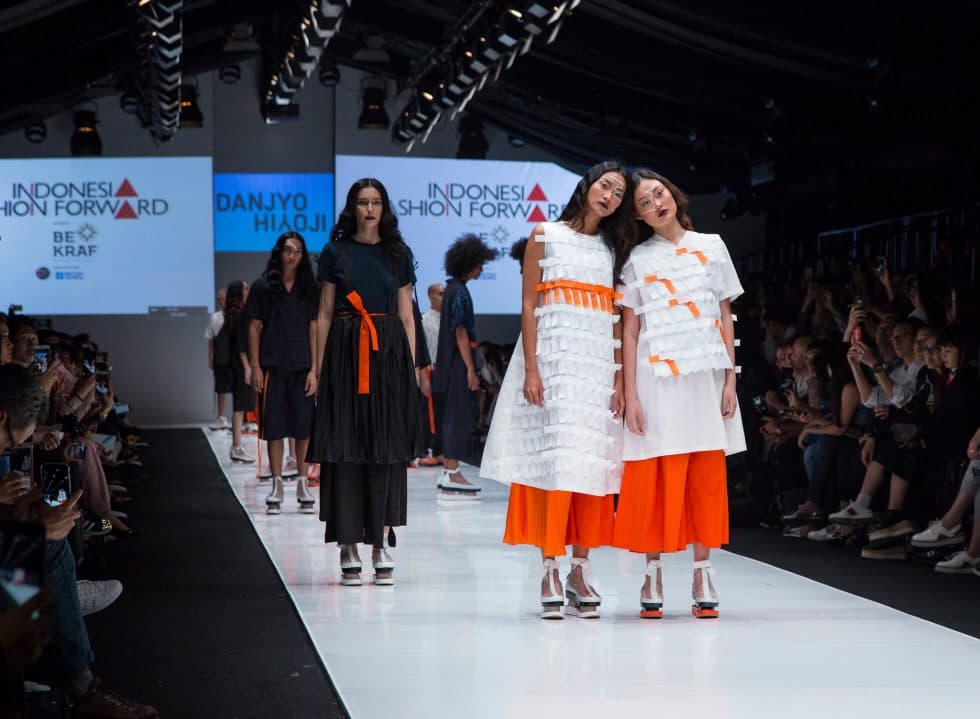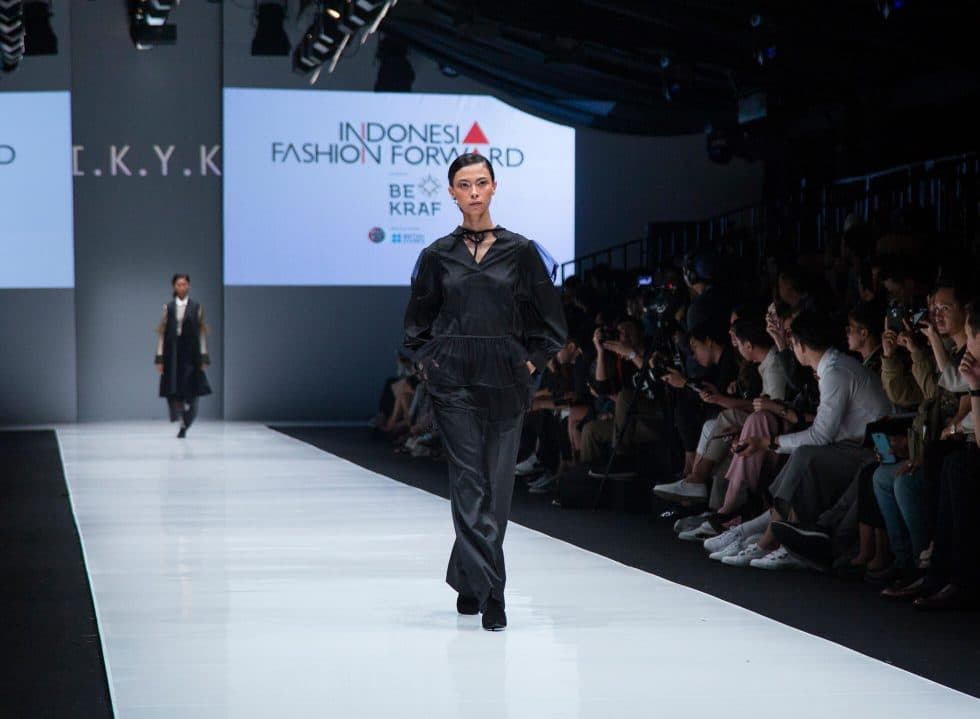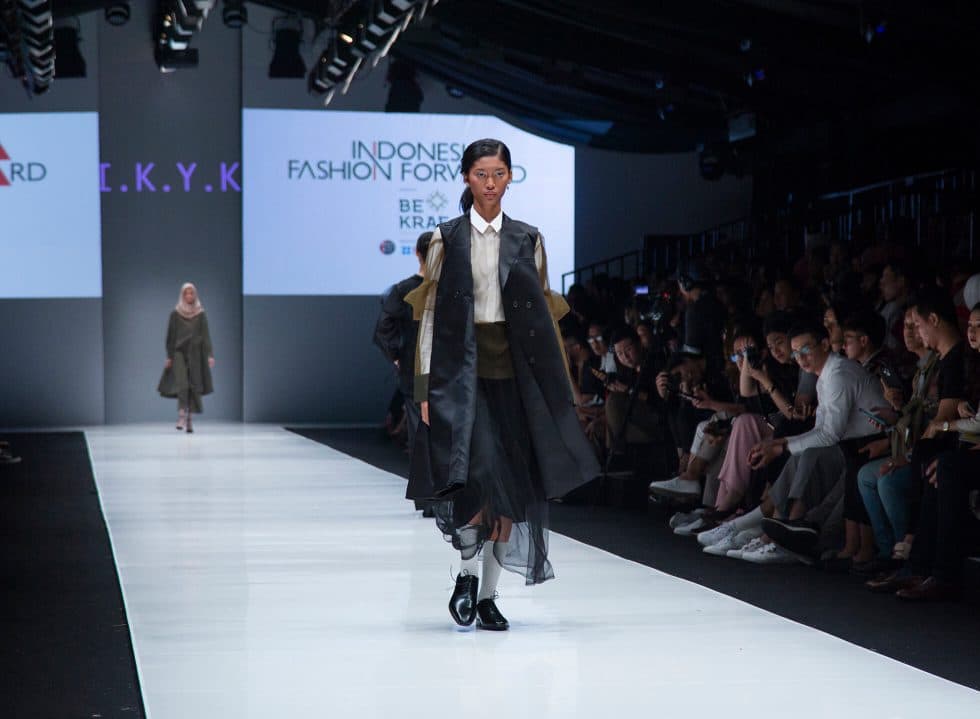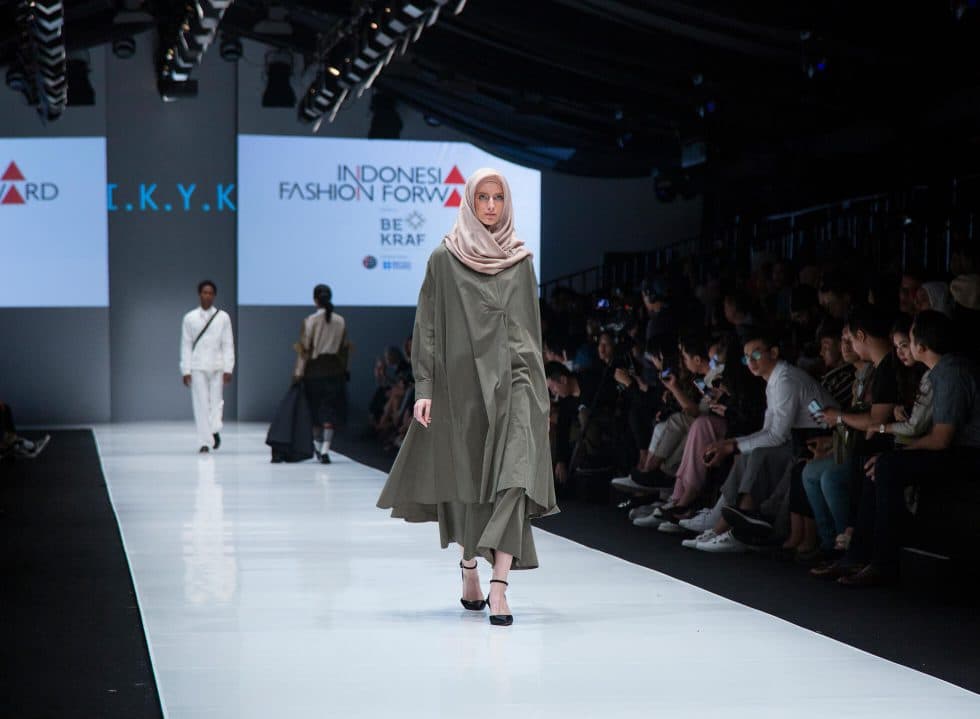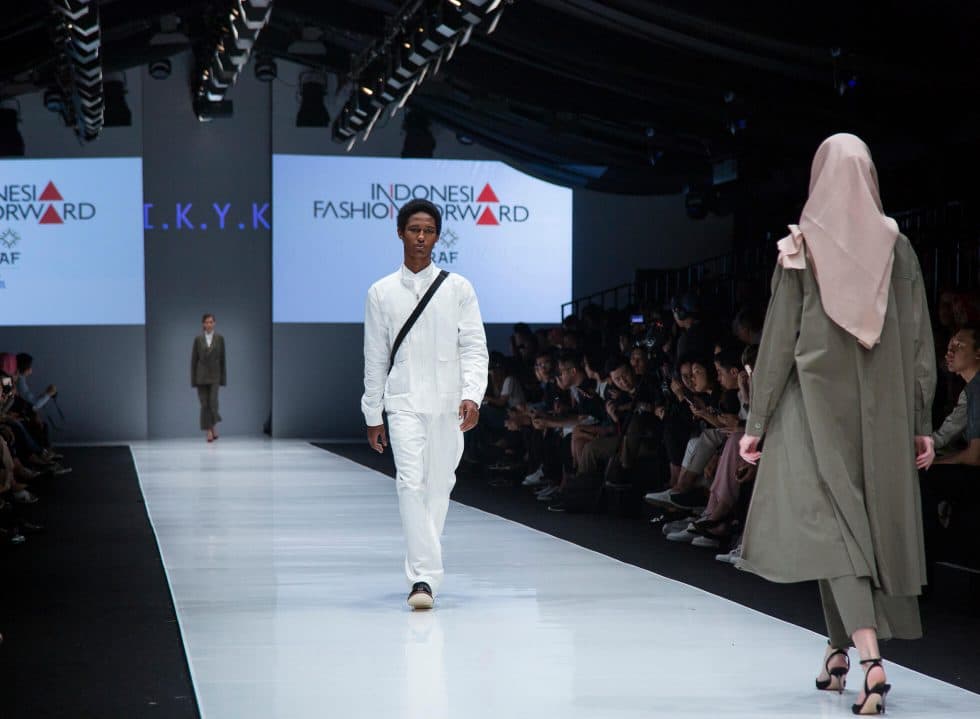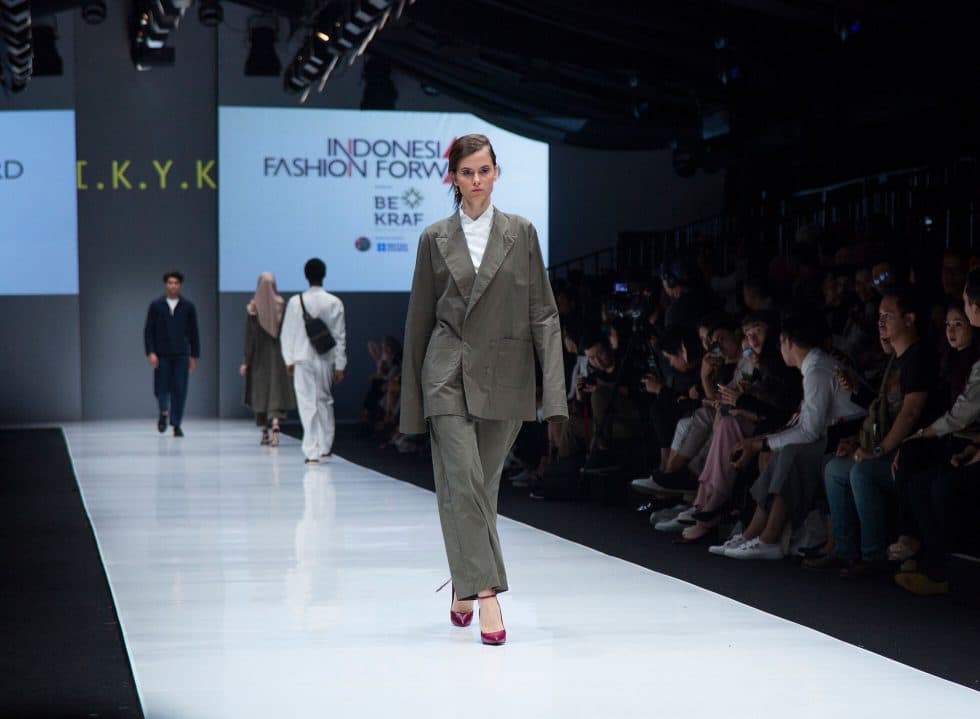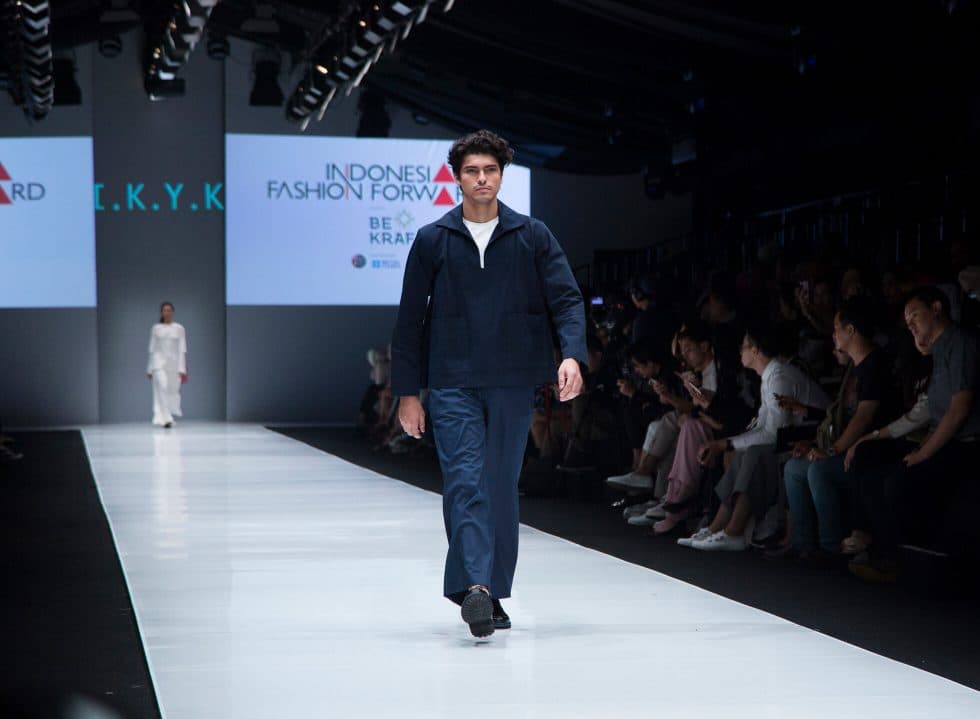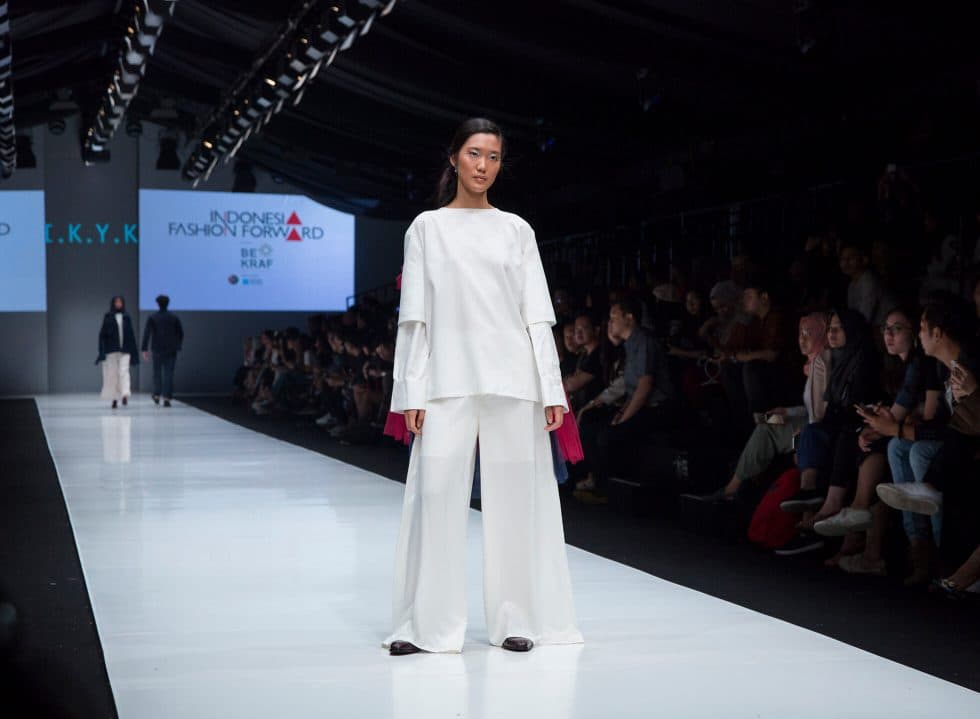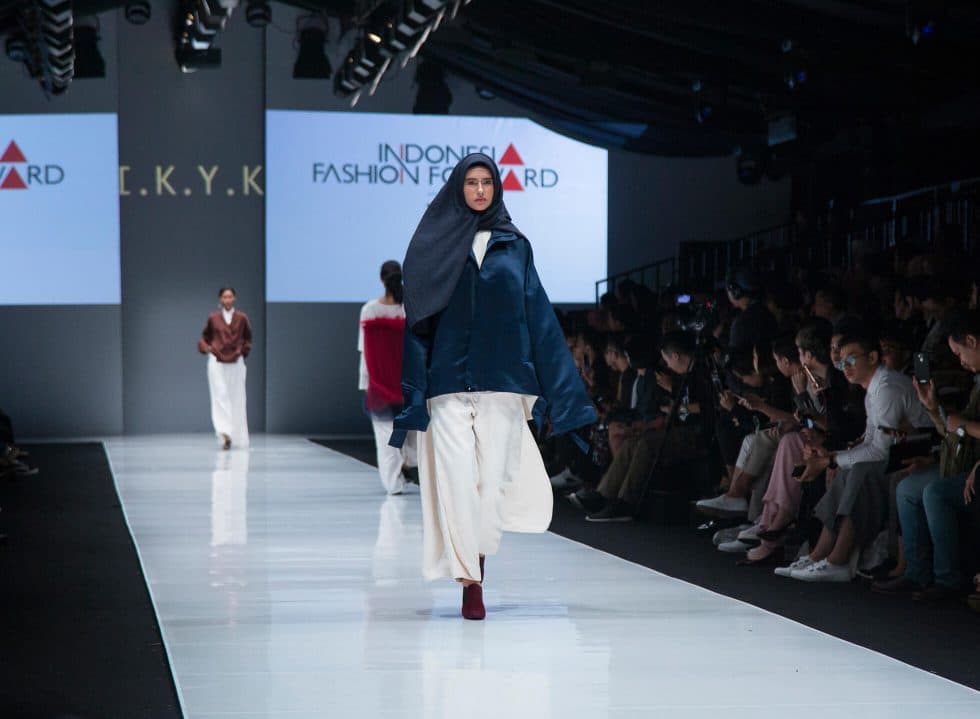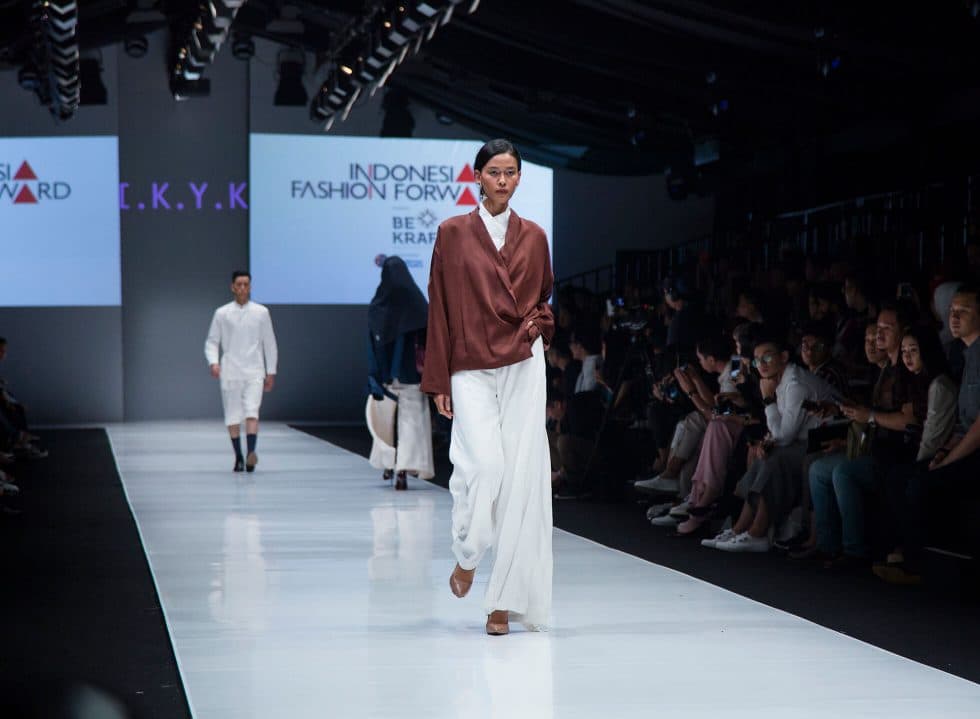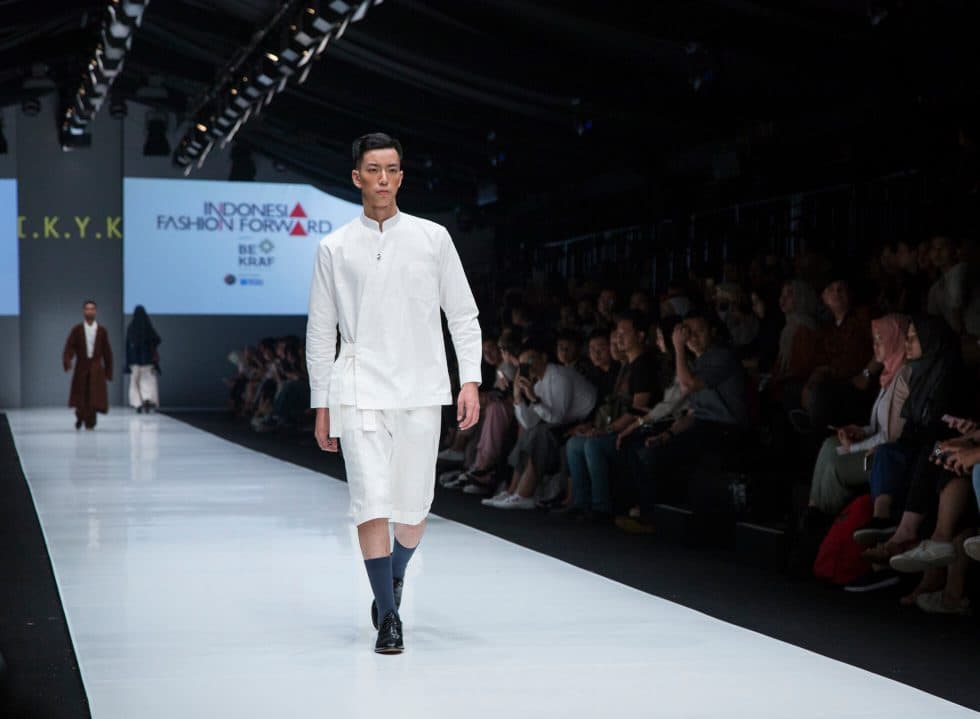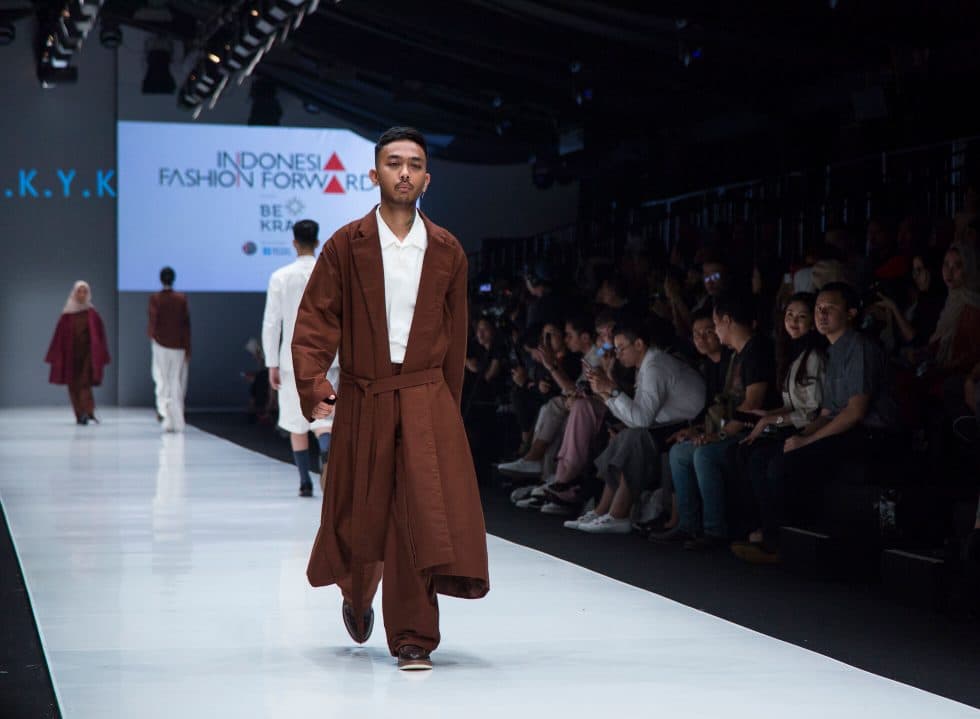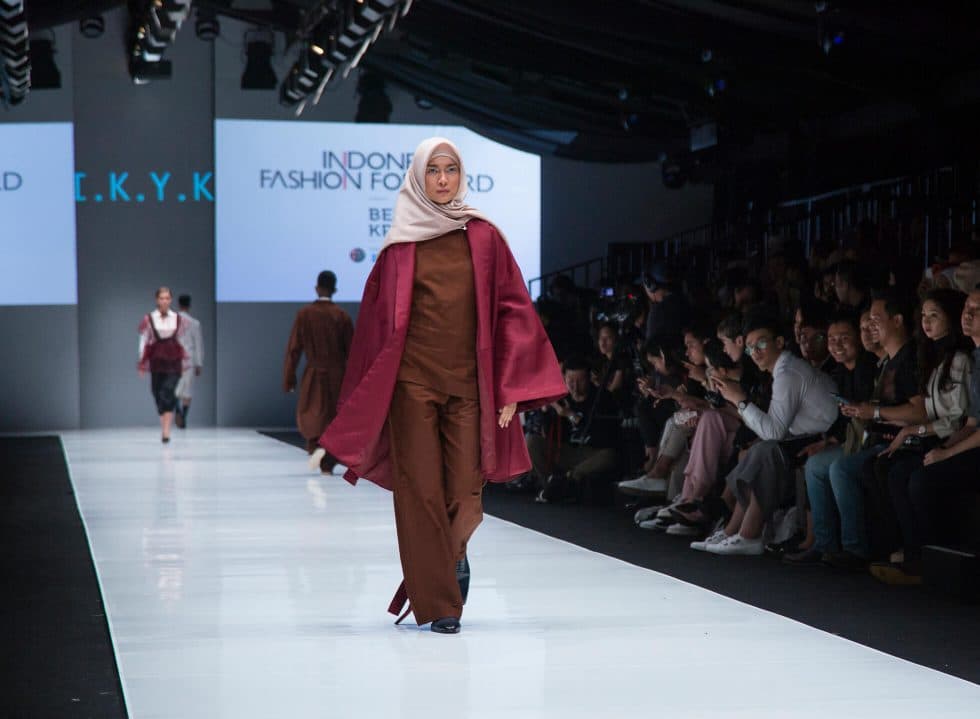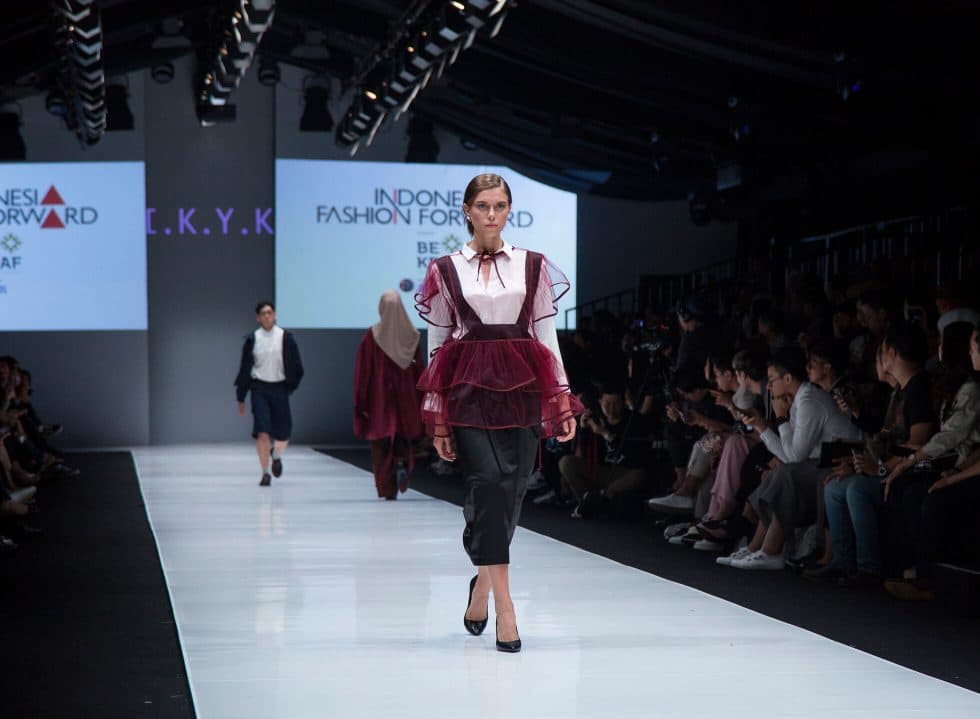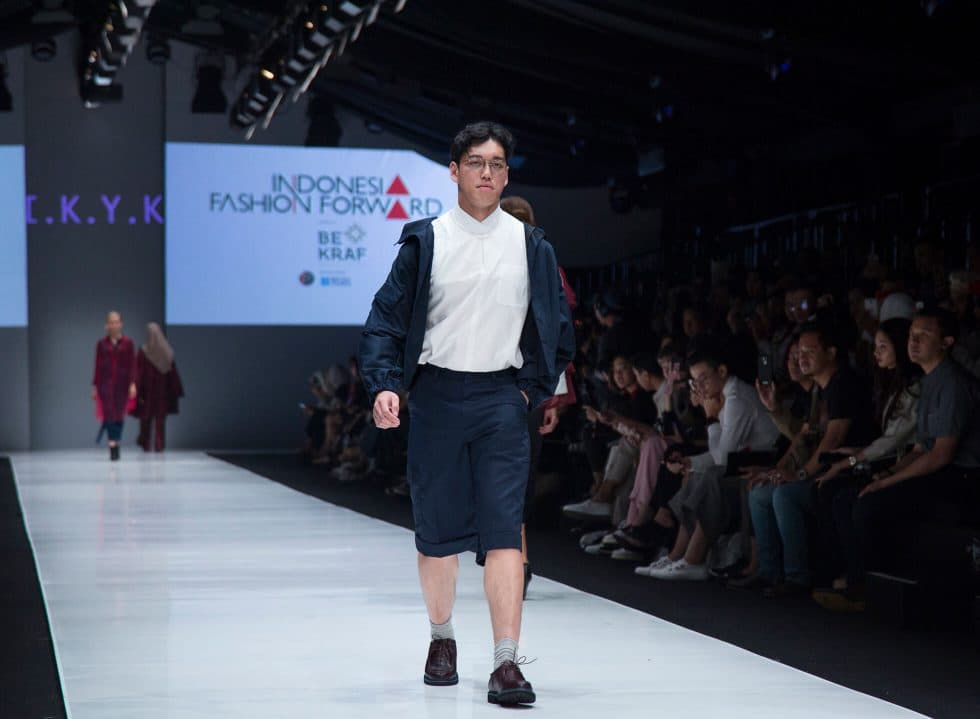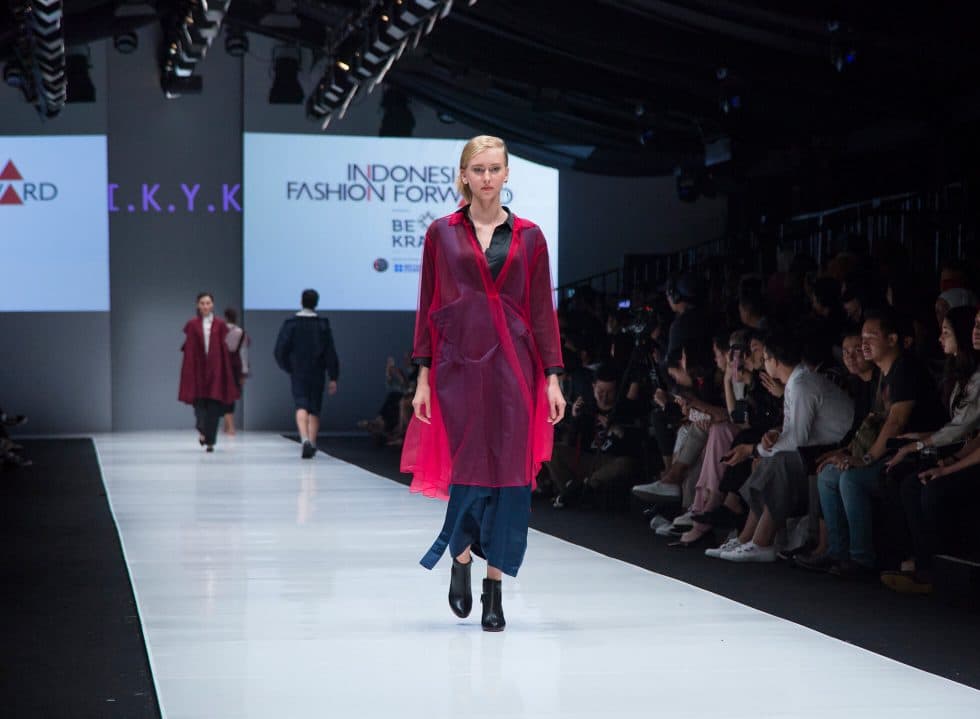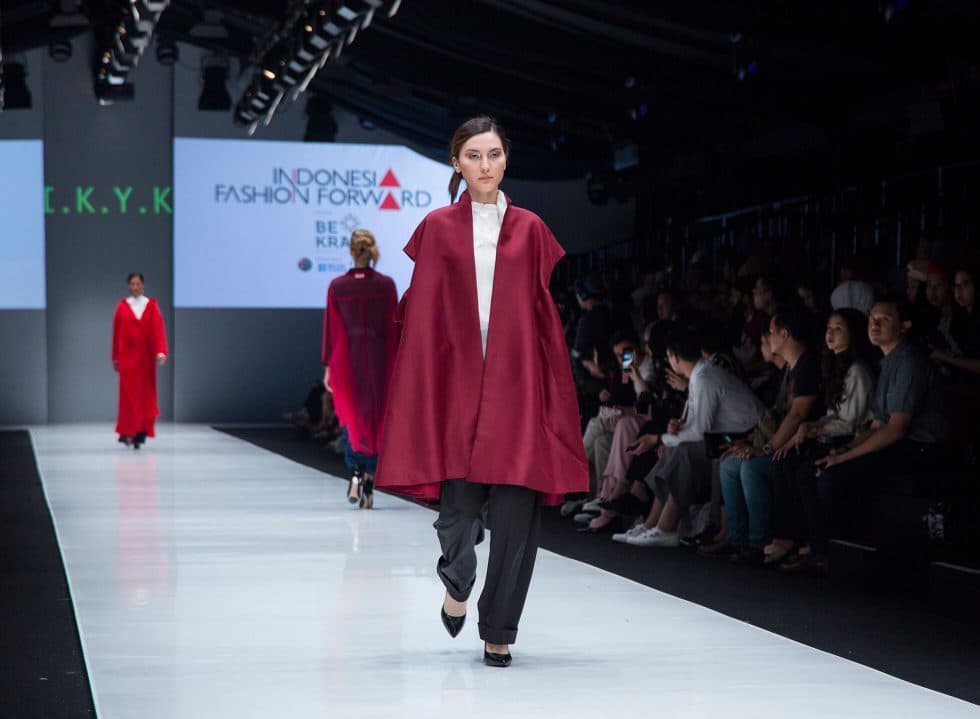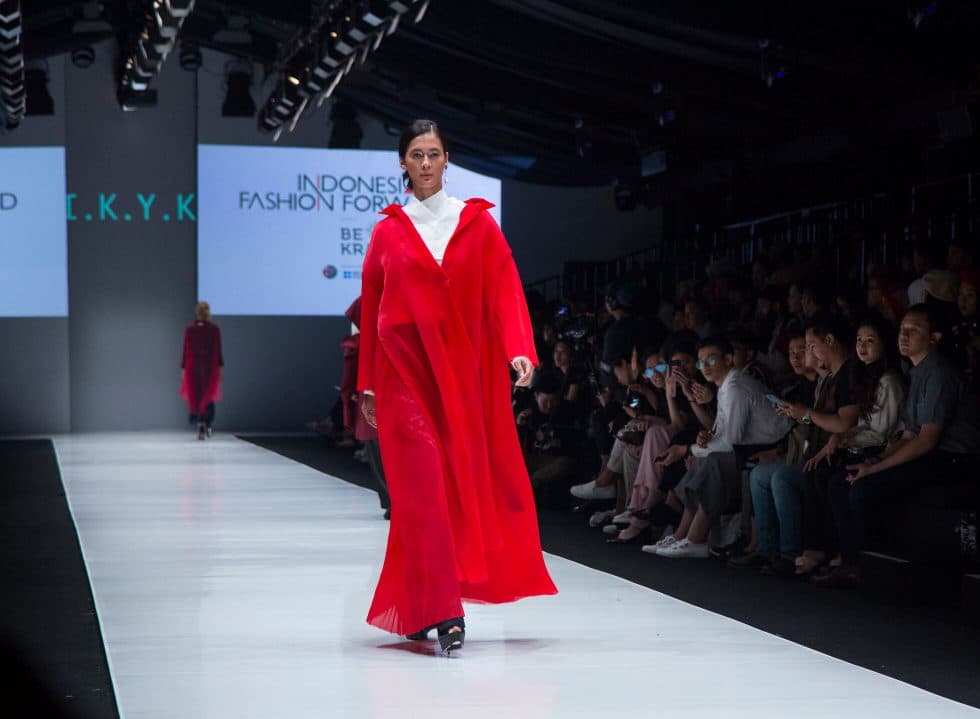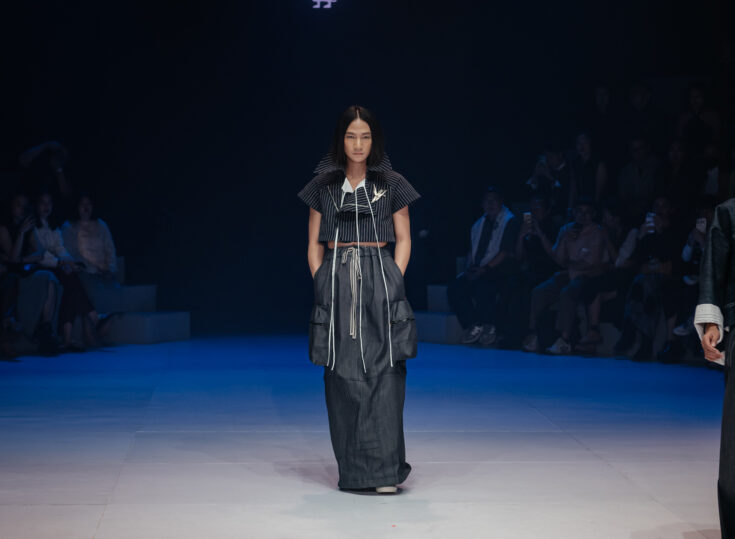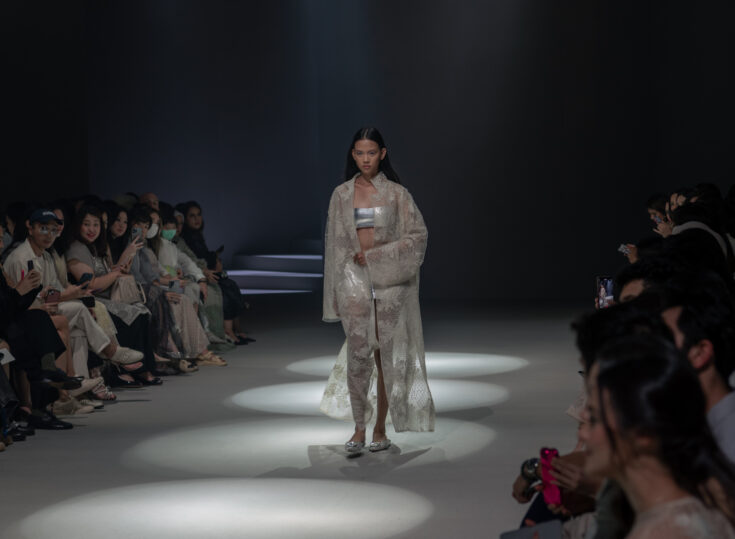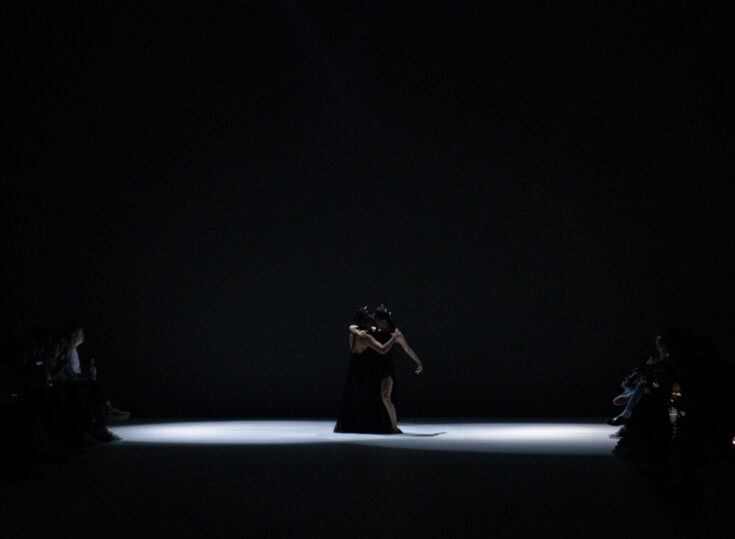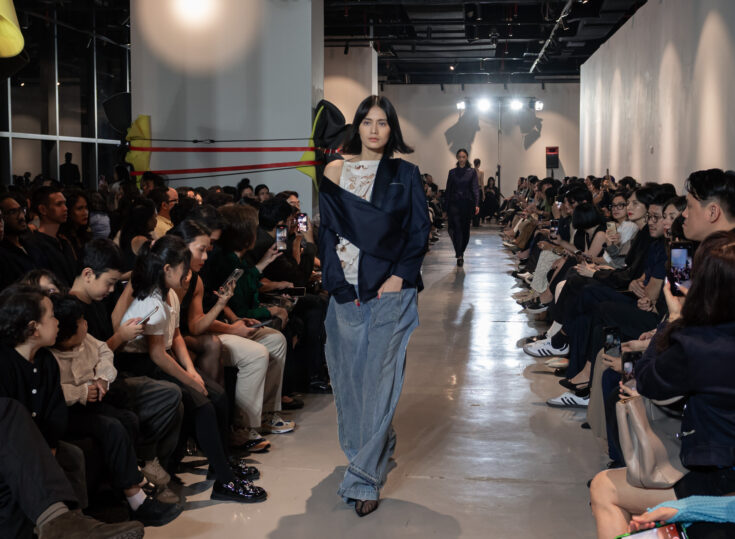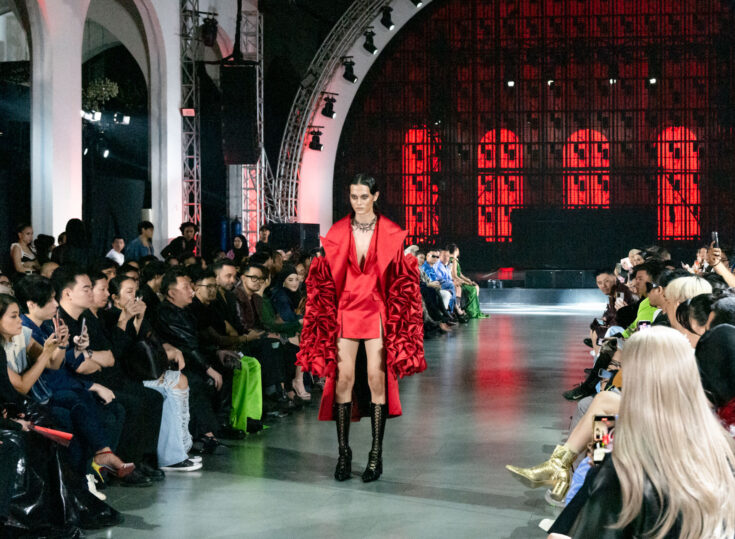Aside from the fact that flight tickets are getting more and more affordable, the age of Internet has opened up a virtual door for people to access an array of cultures all over the globe within a few clicks. But such perks also come at a cost: cultural appropriation.
Well, you can’t really accuse Dana Maulana and Liza Masitha of Danjyo Hiyoji for appropriating Japanese culture when they sent out collection that was clearly inspired by the Japanese priest garbs. Perhaps, they are appreciating, rather than appropriating, but here the overall effects somehow felt frivolous.
The designers took their cues from the traditional attire of Miko, a shrine maiden from the religion of Shinto, where they are easily identified with white kimono jacket and red trousers. Instead of red, the colour was dialed to orange. To wit, a striking orange dress that is half-sleeveless and half full sleeve has white strips dangling from the waist down.
Dana and Liza also interpreted o-mikuji, white strips of paper with random fortune written on it that can be found at Shinto shrine, and applied them as decorative element. The last two looks of the show put a memorable focus on the o-mikuji where it covered the body like armour.
But the undoing of the collection was the platform geta shoes. Never mind that Miuccia Prada has sent those out few years back, you can tell the models weren’t having a good time in it, where a handful of them almost lose their balance. Some of the shoes even came apart, halfway down the runway.
Danjyo Hiyoji’s shows are often memorable because they are marked with youthful spirit that feels unencumbered. Models are agile and their movement brisk, which leads back to the essence of youth. Here, it’s another story. Still, more than that, what could have been a solid collection was brought down by the sense that it was purely just a pursuit of cool and, unfortunately, the cultural meaning behind the inspiration was lost in translation.
It must be stifling for Anandia Maria Putri Harahap of I.K.Y.K (I Know You Know) to be pigeonholed as a modest wear designer just because of her religion. That’s why it’s great to see that she’s aiming to dress all kinds of women, regardless of their faith.
Still, it was a flat collection that failed to excite mainly because there wasn’t a clear narrative. Yes, it was obvious that Anandia was inspired by different cultures all over Asia. There’s French maid-inspired dress with sheer ruffled apron that was clearly influenced by maid cafés found in Japan. One of the menswear, a white Karate gi-inspired top came with Mandarin collar.
Then there were a few muslim wear thrown in between. But the most striking was a particular look where a hijab-clad model was completely covered in long sleeve dress, except for her ankles. What was that supposed to mean?
I.K.Y.K was started back in 2011 and ever since, Anandia has been moving from one style to another without a strong code that defined the label. To be sure, there were some solid collections here and there. But it’s time for Anandia to work on a strong direction for the label, because this collection was a bit of a muddle.
